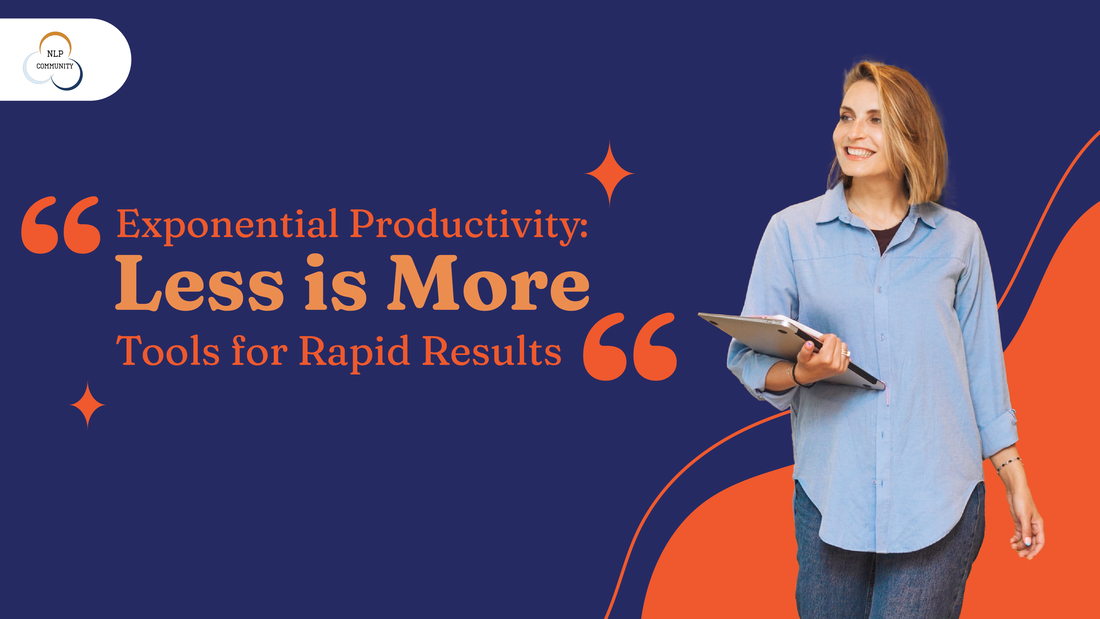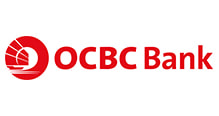|
So often John had faced conflict within his team. Before learning processes in the Neuro Linguistic Programming (NLP) toolbox, he spent a horrendous amount of time, in his role as Team Lead, appeasing members in resolving conflict.
It was one job role he did not look forward too as it involved spending time out of his already busy schedule. He found NLP tools extremely helpful. Learning how to step into the other person’s shoes, to consider how his message would sound to the person on the receiving end. More often than not it stopped John from spouting how he felt and tuned in to how best to respond, a far better likelihood of achieving outcomes. After all, this is what high performers did right? They were outcome driven, no matter what. Triggers and automatic responses were a thing of the past which gave way to amazing and profound results, to say the least. His team members too showed an improvement in performance. This manifested in a more cohesive team willing to work together. He felt they had unconsciously picked up his way of dealing with conflict and altercation via a process of osmosis. Successful team dynamics after all was about the willingness to listen well then respond, rather than react emotionally to the situation. It was his modus operandi in the past. This augured well for the team when generating new ideas or solving problems. Productivity had heightened as disagreements were handled well and eventually fell on the wayside. John realised the entire team had escalated to a new level of communication having learnt from each other. What a magical thing to happen! He loved how unconscious this learning was, most often not realising the profound change occurring within the person. Open and clear communication was after all the key to great group dynamics. It was evident the team was able to establish a common language. Members felt the team was being heard while their contributions were valued too. It made them want to work even more as they began to feel a sense of belonging. So many benefits, John reflected, from merely changing his way of communicating. He was eager to see how the C-suite would impact organisational results when they were done with their NLP learning journey. It was early days yet. There was much to look forward to!
0 Comments
The Culture Alignment program had begun. Starting with the C-suite, John who was the catalyst to introduce NLP into his organisation was identified as Head, Internal Champions Team. His role would be to pick talent from groups who showed promise, at every level. These were employees who took to NLP like a duck to water. Sylvia called them the naturals like “oysters a la natural.”
John sat in the back of the room as an assistant to Sylvia the Neuro Linguistic Programming consultant who was brought in to effect a culture change. Refreshing his memory of what he had been learnt a year ago, he felt elated at the associative memories that returned. The C-suite of 13 pax were hearing this for the first time but he was delving into the same content at a deeper level, identifying what he knew and observing topics that he needed to work through more. NLP was such a deep high performance model. It was to be integrated into one’s being. It was definitely not just theory. Sylvia began by addressing one of the most important success beliefs; meaning of the communication is the response you get. What did that really mean? It wasn’t about what a person said rather what the recipient of that message understood. Saying something to a colleague, boss, friend, spouse or child, the onus was on you, not them, to clarify it. Communication was a two-way street that created a plethora of misunderstandings and discontent, which did not help any situation. People who learnt NLP communication models were more directed in what they said. Observing the other person’s communicative style, they could then pick a similar style that matched. It was easy enough once John got into the rhythm of practising new models. He remembered early days when he would consciously remind himself to observe and respond accordingly. Today, he considered himself a veteran who had mastered this aspect of NLP. Communication had become a breeze with his circle of influence and when things went wrong, he knew what to improve. One of the greatest skills a Team Leader could give their people is to mentor them to be independent of their manager. Sandy was eternally grateful to her boss for teaching her these skills at the start of her career. This helped her fast track progression through her career path.
Coupled with the NLP Practitioner course where she learnt how to manage her state of mind, she could access calm and confidence in the most chaotic times. No wonder she cruised through the Pandemic while many suffered, not knowing the way forward. Sandy also became intimately aware of her timeline in every instance. When to pull it in and meet stringent deadlines or relax her timeline when on vacation. She understood her values, prioritised them and was driven by them. It was great to see the difference when she did not know how her unconscious mind drove her. Like a life skills jigsaw puzzle Sandy learnt where each piece of self-management fit into her life. When she ran into trouble she knew where the problem was and how to fix it. Just like a car mechanic, she was able to diagnose the problem well. It was the same for everyone in every context. Whether managing children or a team, it was fundamental to teach people how to self-manage. Over-protection hindered their mind muscle from developing. Rather, throwing people into the deep end had so much more value because believe it or not, people had all the resources they needed. They just had to dig deep and learn how to access them. Sandy encapsulated self-management in the three pillars below: 1. Confidence, initiative and enthusiasm
Annabelle was learning fast. Sandy her Neuro Linguistic Programming coach had helped her transform out of a bad relationship and she was now ready to take a step further.
Learning self-management skills meant being able to coach others too. She saw independence and freedom ahead. The more reliance on self, the faster she would achieve her outcomes. Since the Pandemic hit, more and more employees were realising the importance of this as work from home became a norm. Adaptability to a new landscape rose to the top of the list as people realised they had to be prepared for all types of scenarios. Their mind muscle needed to flex. Rigidity was a think of the past, a luxury. Sandy shared her personal journey with Annabelle. One of her biggest takeaways from her very profound father was to be proficient in whatever she chose to do. Sandy was groomed to self-manage from a young age. She learnt to do as many things as possible, that she had an interest in. This ranged from cooking and baking which she learnt from her mother, to driving skills at a later age. This augured well as she moved into corporate life. Her boss too reinforced self-management at work. He prodded Sandy to do whatever was given to her whether it was her job or not, with the ultimate aim of learning as much as she could. This did not allow for laziness or blame. Self-management at work pushed her forward in her career, as answers that were sought by senior management often rested with her. She became a “reliable person” in the eyes of bosses, someone to turn to. Sandy had unknowingly installed a sense of deep accountability and they felt safe with her, knowing the job would be done. One aspect of acquiring self-management skills that made it easy on Sandy was personal growth courses. This fast tracked her learning while giving her the opportunity to pick up structure from experts. It was an accelerated approach to success. She had to manage time even more effectively, make quick and good decisions, drive teams to high performance and heighten her leadership capabilities. She journaled her learnings and journey. She had come a long way… Much to her surprise as Sylvia shared NLP tools, leaders realised they needed help. Most worried and shied away from coaching in the beginning as they were concerned with having to divulge private and personal information.
However, when informed that these self-management tools comprised a toolbox of facilitated processes like visualising and meditating, they were put at ease. In so many instances, leaders shared at the end of sessions how much they looked forward to the next one. People like Sylvia who had achieved NLP mastery were able to use this as a fundamental transformation pillar, then add unique talents and expertise to the brew. This produced magic. The trick was to stay out of “content of an experience” which was noisy and only served to distract from the issue at hand. Rather, NLP worked through the context of a person’s experience. People knew what needed to be changed and all they needed was a process and a facilitator to guide them. They then made the necessary changes. For instance, Sylvia had a client who was a senior leader. His hands would involuntarily shake as he presented at the lectern. In a few processes he eradicated this and couldn’t imagine he had lived with that behaviour all his life. In fact that also led to other wonderful side effects like restful sleep at night and a feeling of relaxation, something he had not experienced in a long time. Hard to believe and feeling incredulous at the results he had achieved, this was the door that opened him to attending an NLP Program. As with many other cases Sylvia had worked with, Rapid Success Coaching took clients beyond the boundaries of their mind. That is how change occurred. It had to be experienced to be believed. In another example, a leader knew he had control issues that had been a family pattern for generations. He found it hard to make changes towards being a more democratic leader. He was right! Change through the conscious mind was hard work. It took a long time and was not permanent. So why even try? Rapid Success Coaching was exactly what leaders and managers needed to get rid of their emotional behaviour patterns fast. Trevor, HR Director in the organisation was in. He needed to do a bit more research. He would propose a Culture Alignment project starting with the Senior Leadership team. He would need approval from the Board. It was important to cascade this down the line in small bite-sized pieces so employees could chew on it, assimilate then apply what they had learnt. The word simplicity came to mind! Trevor was the Head of Human Resources in the organisation that John worked for. They were good friends. Both were members of the Senior Leadership Team, John being Chief Operations Officer. He was always on the lookout for great talent. He needed people who had great relationship skills and were easy to work with.
Trevor helped him recruit. He hired people with potential who could be coached and mentored into more senior positions. So when John returned from the NLP Practitioner Program, the two colleagues decided to catch up for a drink. Friday night was a good bet. They usually went on through the wee hours of the morning. As John related his NLP experience to Trevor, both knew they were on to something that would really propel their careers. Sylvia was the NLP Master Trainer who John trained with. He chose her because of her deep corporate experience in Banking and Professional Services. Sylvia had also created Rapid Success Coaching which caught John’s attention. This model as Sylvia shared at the NLP Program, emerged as a by-product of more than 30 years-experience in aligning organisational cultures. As she worked with corporates, she observed that every single one of them yearned for change in a short timeframe. John took notes as she related her experience of how she applied NLP to the corporate context. He would hire her for some big chunks of initial work with the leadership team and perhaps have some of their internal people trained too. Then progress the initiative down the line. Trevor was buying in to this idea. John needed that. He was after all the one with the purse strings and authority to push this forward in the organisation. He asked “tell me more about the Rapid Success Coaching model” as John explained how Sylvia meshed NLP processes within the toolbox, to create more impactful results. Organisations needed more effective managers and authentic leaders. A complete dearth at the moment was communication. He could only imagine what would happen if the organisation heightened communication throughout. It was like oiling the machinery for smooth operations. Sylvia’s focus was to have employees self-manage so leaders could focus on what they were really meant to be doing. She observed how employees turned around fast, given a few self-management tools. Like catching a tiger by its tail, managers found their teams flew to accelerated results. “What underpinned this rapid transformation?” Trevor asked. John spoke to some participants at the NLP Program who had experienced this. They had met with rapid success. They were animated and eloquent in explaining the internal emotional unblocking they had experienced and were quick to add that NLP processes were at the source of this change. The distinct difference was that NLP worked with the unconscious mind, the five senses. Sylvia then further explained that Rapid Success Coaching combined NLP with other modalities that she was qualified in too. All up, she was essentially targeting self-management as her main objective. People were too reliant on managers and leaders to make decisions for them. The onus of decision making had to fall in their hands so a deeper culture of accountability would form. This is how Sylvia applied her corporate experience in business units that she worked in. Annabelle’s story was classic. She had been in bad relationships all her life. This included relationships with her parents, siblings and extended family. She felt they were to blame. She didn’t notice how her own patterns contributed to the dynamics of these relationships.
Being locked at home with her partner during the pandemic, her relationship came under the microscope. Issues highlighted were ones that had been staring her in the face for a long time. She was going crazy not knowing how to sort out her life. Having seen a Facebook post from a coach, she responded. Sandy turned out to be a saving grace. She was trained in Neuro Linguistic Programming (NLP), a model created by two geniuses who coded and structured how rapid change could occur via the unconscious mind. Hailed as a magical intervention that worked well with the inner self to attain better outcomes in life, the NLP toolbox contained more than 100 processes. Sandy singled out 3 of the most important NLP techniques that she felt helped her make a quick turnaround. She felt others would also benefit the way she did. NLP techniques focus on deleting unhelpful programs and installing more generative ones in replacement. Three NLP Techniques That Transformed Annabelle’s Life: 1. Eliminate Unwanted Habits The Swish pattern was useful for Annabelle as it helped her swish out unwanted habits and redirect her focus to healthier ones. All she had to do was push away pictures that she had formed for the former while bringing the latter picture to the forefront. Her coach, Sandy felt this technique was useful as Annabelle displayed compulsive/obsessive behaviours such as nail-biting, smoking and addiction to foods like sugary snacks. All of these had an impact on her self-esteem and as a result, overflowed into her relationship. Annabelle felt a huge amount of stress release from doing this technique. She was beginning to see the value of NLP coaching. 2. Elicit Values for Motivation Annabelle suffered greatly from a lack of motivation. She had no purpose to be alive which is why she unconsciously sabotaged her relationships. Dragging her feet was not the way to live. She had reached her threshold. This was a sign to Sandy as an NLP coach that Annabelle needed to migrate to a new level of values. She elicited Annabelle’s values for life by asking “what’s important to you about life?” It was fundamental that Annabelle see the list that emerged. She learnt that because values are our deepest unconscious filter, it is important to understand and acknowledge the values that drive her. This would then help her align her values internally and make decisions that propelled her to them. No wonder she was unhappy at work. She was in the wrong job. It was crystal clear to her, without any prodding from Sandy. She knew she had to eventually leave. When people’s work and personal life are aligned with their values, they are comfortable, happy and in a natural state. It’s no secret that employees whose values are most aligned to the organisation become high performers. They are able to see their role clearly and know how they contribute to the organisation’s overall results. 3. Identify Gaps in Strategies Annabelle had a horrible buying strategy that had gotten her into trouble throughout her life. This was also linked to her compulsive behaviour. It was the bane of Annabelle’s life. This was hard on her spouse too as their credit card bills were excessive. Sandy proceeded to elicit Annabelle’s buying strategy. She explained that strategies were a train of thoughts a person went through to make a decision or achieve a goal. These strategies were described using the five senses i.e. what you see, hear, smell, taste and feel. In other words, what they were after was a set of internal procedures that produce a specific outcome. Every time Annabelle was faced with a buying situation, an NLP strategy elicitation could help her take a closer look at the chain of events leading to the decision. It would reveal a step that needed to be changed or removed for her to successfully walk away. Annabelle was thankful for the diagnosis as to which step of her strategy got her into trouble each time. She almost wanted to go out and try her new strategy. It was exciting to say the least. Sandy chose these techniques as they had a close relationship to the goals that Annabelle had worked through in her first session. The objective was to break the unconscious links between Annabelle’s brain and her behaviours. In a matter of three sessions, she was already feeling 80% better. She was not done yet, but she was adamant that NLP could transform lives if only people cared to give it a chance. The best part was that she did not have to divulge any private details to Sandy. All she did was tell Sandy what she wanted to eradicate and they worked on it. The NLP toolbox revealed coaching in a systematic and structured way. It was far from traditional. In fact, the interaction with Sandy debunked all the myths she had heard about NLP sessions. She loved every minute of them. It was rapid transformation at a totally different level! Richard’s spousal relationship made a significant turnaround fast. He was shocked at the rapid changes both he and his wife had experienced. Overnight, they were both on an elevated level. It was a miracle!
But then again, was it? In the back of his mind, his NLP coach Sandy’s voice rang loud and clear. She had said that as he hit session 3 or so, he would begin to see phenomenal changes. His internal radar was being reoriented. He didn’t quite understand what that meant specifically as he had never experienced immediate change before. As he learnt more about NLP, he was beginning to gain a deeper understanding of how the unconscious mind worked. NLP bypassed conscious filters which is why change occurs rapidly. For instance, Richard’s long-standing anger disappeared when he simply changed the pictures, sounds and feelings associated with the event that triggered it. He did not have to discuss why he felt that way or intervene with conscious thought. All he had to do was open himself up to an easy, meditative process called Timeline Intervention. Contrary to what he had heard in the past, this did not require a diagnosis or judgment of any sort. Neither did it require going into the why, how, when and where. He merely recognized his anger, then cleared it through Sandy’s expertise in facilitating the NLP process. It made sense to do it this way. For years, he had steered away from “therapy” never wanting to talk about his anger. If only he knew that NLP did not require him to do so. No wonder Sandy called it Rapid Success Coaching! There were processes for every type of life situation – conflict resolution, rapport building and more. Richard acknowledged that certain emotional thought patterns had affected his mental health all through his adult life. Now that he had reprogrammed his thought patterns and the habits he had formed from young, he could see the benefits such processes would bring to his team at work as well. Speaking the same language, they would be producing superior results without trying. In fact, he would bring Sandy in to do some ground work with the team while he did some of her online classes and equipped himself with the tools to apply the concepts too. She had designed these courses specifically for people to live from a sense of purpose and taught these very processes that he had experienced as a client. “Create Your Future Now” was about eradicating past negativity and designing a purposeful future. He knew that working with “context, process and structure” was an art that he wanted to learn. “Content” of life was slow and noisy. Stepping out of it with artful questioning and influential language was the way to go. Plus, if he could help his team change the 5 senses in experiences that were causing their blockages, their perspectives would improve. It was like doing a software update for your computer. It was because of this that NLP was becoming more commonplace in corporates, where the tools could be applied to leadership, coaching and culture alignment. There was one philosophy in particular overarching NLP technology that stuck in Richard’s mind. It read “If I can change my mind, I can change my performance. So when I change my performance, I change my results.” The tools to change his mind were in the NLP toolbox and if he had his way he would have liked to add the word “FAST”. NLP being an accelerated learning model, fit perfectly into the mindset of a high performer or a progressive employee, anyone who wanted to spike their career path fast. It was like unknotting a rope within. Once Richard had unknotted himself, he saw different perspectives and felt totally refreshed! A new way of operating was available. He just had to choose it. Many described NLP as magic. He now knew why! |
SYLVIA FERNANDES
Sylvia is a qualified Neuro Linguistic Programming (NLP) Master Trainer. She started her business in Sydney and is now based in Singapore. Archives
December 2024
Categories |









 RSS Feed
RSS Feed









